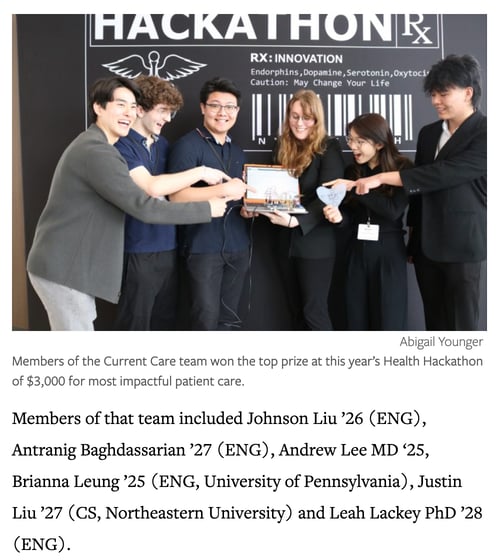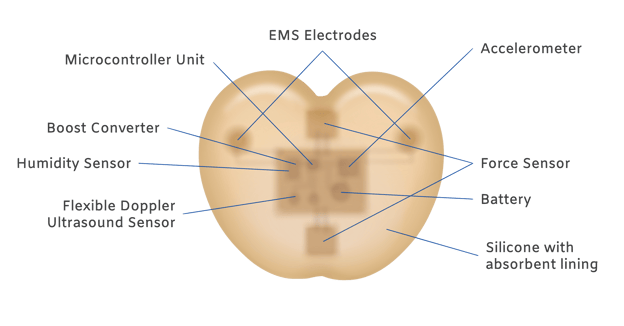Current Care
The pressure ulcer prevention device that won the Cornell 2024 Health Hackathon
5/24/20242 min read
Introduction
I participated in Cornell's 2024 Heath Hackathon where my team (bunch of amazing people) and I decided to tackle the issue of pressure ulcer formation (an injury that breaks down the skin and the underlying tissue) by designing a device that applies electric muscle stimulation into areas prone to pressure ulcers.
Applying electric muscle stimulation to areas certain prone areas will increase the blood flow and thus preventing the formation of the pressure ulcer.
As you scroll down further, it'll display our work during the Hackathon. We are currently advancing our product development with the aim of releasing it to the market once our device obtains FDA clearance and successfully completes series of clinical trials.


First Proof of Concept Hardware Prototype
Final Proof of Concept Prototype


Design by Brianna Leung '25 (Bioengineering, University of Pennsylvania)
Hardware Proof of Concept designed by Leah Lackey and I


We as a group of engineers and scientist decided to tackle this problem because this is a extremely big issue in our health care system that has little to no solutions/ineffective solutions. Modern solutions like the alternating air mattress and the lief monitor only offers very binary solutions where the other bio-metric factors are not considered.
Not only that, pressure ulcers are also causing nursing to burnout quicker, which results in the hospital's CMS Star Rating to go down (hospital ranking system). We found that insurance companies do not cover for pressure ulcers since it is technically caused by the hospital (this lowers the CMS Star Rating too). Hospitals would be forced to pay for the patient's pressure ulcer treatment. The average cost to treat one pressure ulcer injury will cost the hospital $21,767. While if it's a stage IV case, treatment would average $129,248
According to a recent study, patients receiving stimulation were 85% less likely to experience a pressure injury than patients receiving standard care. This will not only help the patient with preventing the formation of pressure ulcers, it would also decrease the burnout rate among the nurses and other healthcare professionals, leading to a better CMS Star Rating.
Contact Information
jl3486@cornell.edu
johnsonliu556@gmail.com
